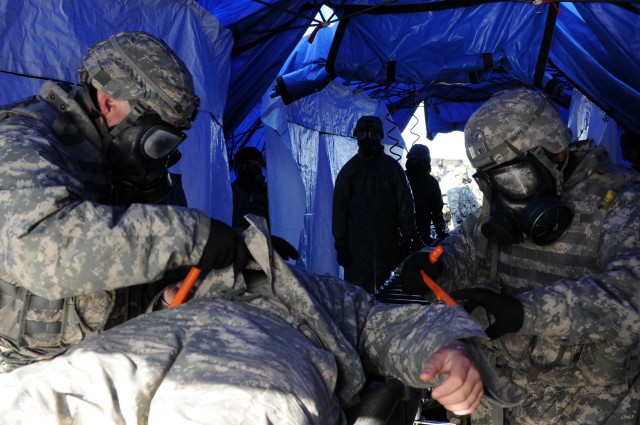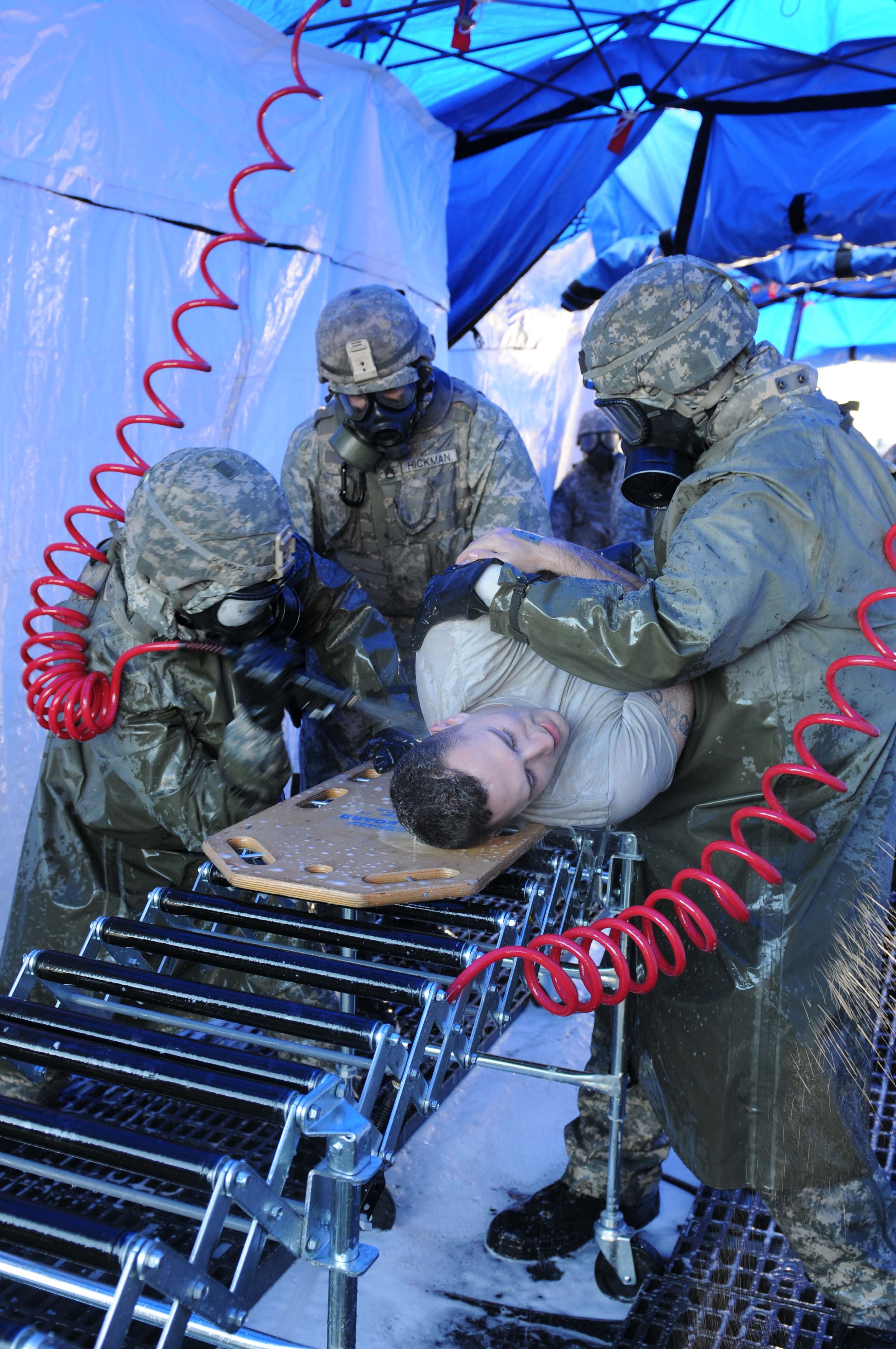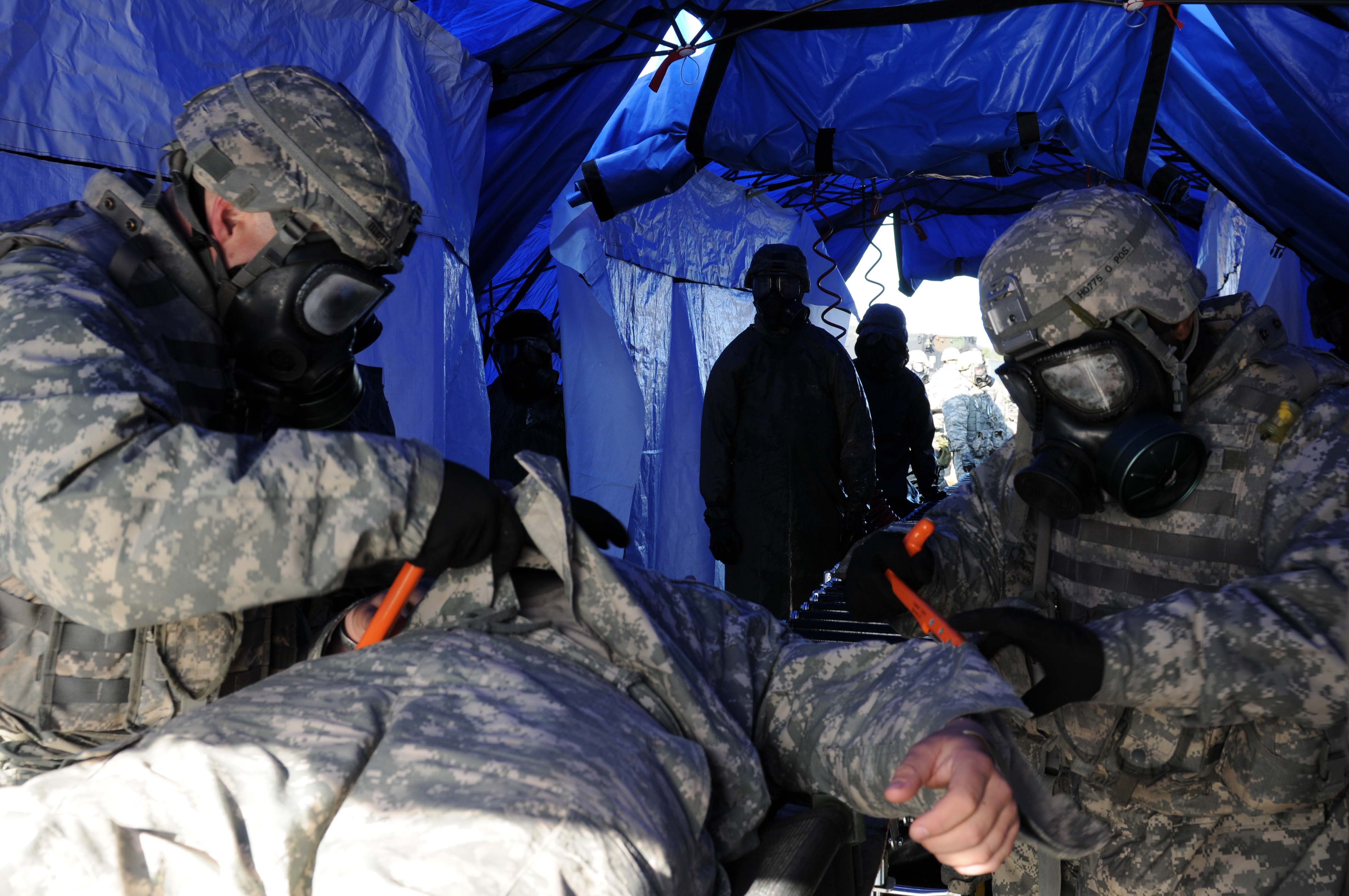Elma, Wash. Aca,!" In light of recent world events, the abilities of an Army unit to respond to a situation involving chemical, biological, radiological and nuclear agents has become more significant to contain a disaster of a large or small magnitude.
The 61st Chemical Company, Bulldogs, of Joint Base Lewis-McChord, participated in a four day field training exercise at Satsop Developmental Park in Elma, Wash., May 12.
The threat of chemical, biological, radiological and nuclear disasters is out there. The threat doesn't have to be from a terrorist, it could be an accident, spill or natural disaster, such as the March earthquakes and tsunami's in Japan. They damaged nuclear reactors and cooling towers which created a radioactive substance that was released in the air and contaminated the area.
"What happened in Japan made us realize the threat is out there," said Boyle, an Enfield, Conn., native.
In an industrialized nation, like the United States, there are many plants and factories that may not seem like a danger until something goes wrong.
Chemical, biological, radiological and nuclear accidents may not happen often, but we still have plants that have these threats in them and contaminate people without it being an attack from a terrorist, said Staff Sgt. Christian Floril, chemical specialist, 61st Chemical Company . If it blows up and people have the chemicals on their skin or they're breathing it, we have to be able to help them out with that.
In order for the Bulldogs to train how they fight, they had to get out of the woods of JBLM and into an urban environment.
"We chose the Satsop Developmental Park because it gets us out of the monotony," said Capt. John Boyle, company commander, 61st Chemical Company. "As excellent as the training facilities are at JBLM, this brings us to a new environment to train in. It gives us the element of the unknown. It really tests their abilities to be flexible and adapt to an ever changing environment around them."
The Bulldog's knowledge was put to the test while training on several different processes, to include sensitive site exploration, terrain decontamination, personnel decontamination processes and ended with a company-wide mass casualty exercise.
For the mass casualty training, Soldiers portrayed people who were exposed to a chemical, biological, nuclear, or radiological contaminate and needed to receive treatment. Those in the decontamination platoons suited up in their protective masks, plastic gowns, rubber boots and gloves and prepared for the incoming casualties.
The unit set up a link up point where medical personnel who set up a triage to evaluate casualties, said Floril. Once evaluated the casualties will get their contaminated clothes cut off and brought to contaminated items bin.
If casualties were ambulatory they walk through the wash tent. Litter patients are put on a spine board and rolled through, said Floril, a Brooklyn, N.Y. native. They are sprayed with warm soapy water for about 20 minutes. After the cleaning cycle, they go through a rinse cycle to get all the soapy contaminated water off them. After the wash tent they are monitored to see if all contaminates are removed. If they aren't clean the wash cycle is repeated. Once clean they are removed from hot zone, the area of contamination.
Soldiers in the 61st Chemical Company embody the Army value of selfless service.
"Our job is to help others, get them treated and worry about ourselves later on," said Floril.
The Bulldogs successfully put everything they've learned at JBLM to the test at the unknown, unfinished nuclear power plant at Satsop.
Boyle said he thinks the unit did fantastic. The Soldiers really stepped up to the challenges of facing the unknown and did well. Both the junior and senior leadership were able to think outside the box and adapt. The unit was able to overcome a lot of the challenges that they were presented.






Social Sharing